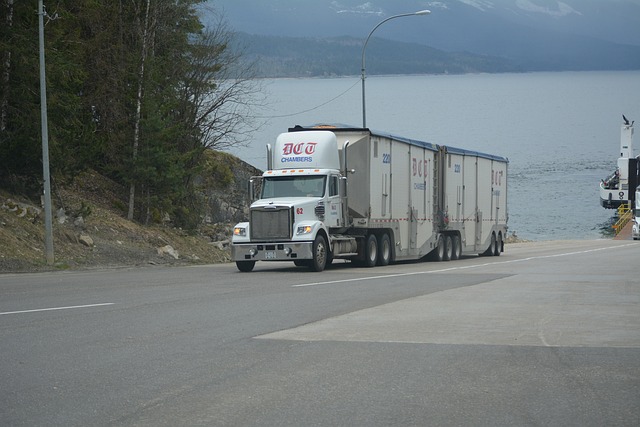Physical damage policies are essential for multi-truck fleet management, protecting against financial losses and legal consequences through comprehensive coverage. Effective management involves regular reviews, sophisticated risk assessment, tailored coverage strategies, and clear communication to ensure compliance and minimize incidents. Staying agile by adjusting policies based on trends, changes in fleet composition, and industry best practices is crucial for robust risk management in a dynamic operational environment.
In the dynamic landscape of trucking operations, effective multi-truck policy management is paramount for long-term success. This article guides you through a comprehensive strategy, focusing on key aspects such as understanding the foundational role of physical damage policies, risk assessment and tailored coverage, robust communication and employee training, and regular review for adaptability. By mastering these elements, operators can ensure their fleets are protected against evolving risks, fostering sustainability and operational efficiency. Uncover vital insights into creating robust, long-term plans for multi-truck policy management, with a special emphasis on the critical component of physical damage policies.
Understanding Physical Damage Policies: A Cornerstone of Multi-Truck Management

Physical damage policies are a fundamental aspect of multi-truck policy management, providing a robust framework for addressing potential risks and ensuring efficient operations. These policies focus on mitigating losses arising from accidents or mechanical failures, which are inevitable in the trucking industry. By thoroughly understanding physical damage coverage, fleet managers can make informed decisions regarding risk assessment and mitigation strategies.
Comprehensive physical damage policies encompass various scenarios, including collision, rollover, and cargo damage. They offer financial protection by covering repair or replacement costs for vehicles involved in covered incidents. Such policies also often include provisions for liability coverage, safeguarding against legal repercussions arising from accidents caused by the insured trucks. Effective management of these policies involves regular reviews to align with evolving industry standards and risk profiles.
Assessing Risk and Setting Coverage Parameters for Long-Term Sustainability

Effective multi-truck policy management requires a nuanced approach to risk assessment and coverage parameters, especially for long-term sustainability. Organizations must thoroughly evaluate potential hazards and vulnerabilities associated with their trucking operations. This involves analyzing historical data on accidents, maintenance records, driver behavior, and environmental factors to identify areas of high risk. By pinpointing these risks, carriers can tailor their physical damage policies accordingly, ensuring adequate coverage while optimizing costs.
Setting the right coverage parameters is crucial for long-term financial viability. Insurance providers should consider the type and value of assets, operational scope, geographic reach, and potential exposure to natural disasters or other unforeseen events. Balancing risk and reward, carriers can develop robust physical damage policies that safeguard their interests while providing necessary protection for their trucking fleet and operations. This strategic approach ensures that the multi-truck policy remains adaptable to evolving conditions, contributing to sustained success in an ever-changing industry landscape.
Implementing Effective Policy Communication and Employee Training Strategies

Effective policy management for multi-truck operations hinges on clear and consistent communication. Implementing robust internal communication strategies ensures that all employees, from drivers to dispatchers, are well-versed in physical damage policies and their implications. This involves regular training sessions tailored to different roles, using case studies and practical scenarios to reinforce understanding. By fostering an open dialogue where questions are encouraged, companies can address misconceptions and ensure adherence to policy.
Strategic communication should also extend to external stakeholders like insurance providers and regulatory bodies. Regular updates on policy revisions and changes not only maintain transparency but also facilitate smoother interactions during claims processes or regulatory audits. Effective communication thus acts as a cornerstone, promoting compliance and minimizing physical damage-related incidents through proactive knowledge dissemination.
Regular Review and Adjustment: Ensuring Your Multi-Truck Policy Remains Relevant and Protective

Regularly reviewing and adjusting your multi-truck policy is essential to ensure it remains relevant and protective in an ever-changing operational landscape. As fleet dynamics shift, new regulations emerge, and technological advancements unfold, your physical damage policies must evolve accordingly. This proactive approach allows you to account for evolving risks, incorporating lessons learned from past incidents, and adapting to industry best practices.
During these reviews, examine the performance of your existing coverage, analyze claims trends, and assess changes in fleet composition or usage patterns. Identify gaps or weaknesses in your policy and make necessary adjustments to bolster protection against potential physical damage risks. Staying agile and responsive in managing your multi-truck policies is key to maintaining a robust risk management strategy.
Effective multi-truck policy management requires a holistic approach, encompassing the understanding of physical damage policies, risk assessment, clear communication, and regular review. By implementing these strategies, companies can ensure their long-term sustainability, mitigate potential risks, and foster a culture of safety among employees. Regularly adjusting policies to reflect evolving industry standards and market changes is crucial for protecting assets and maintaining operational efficiency.
